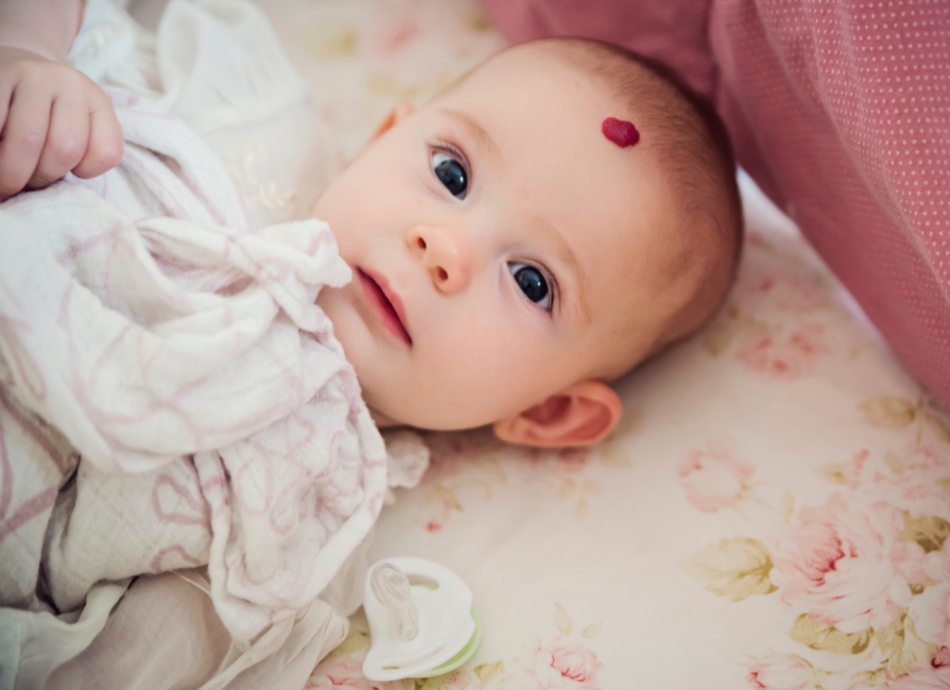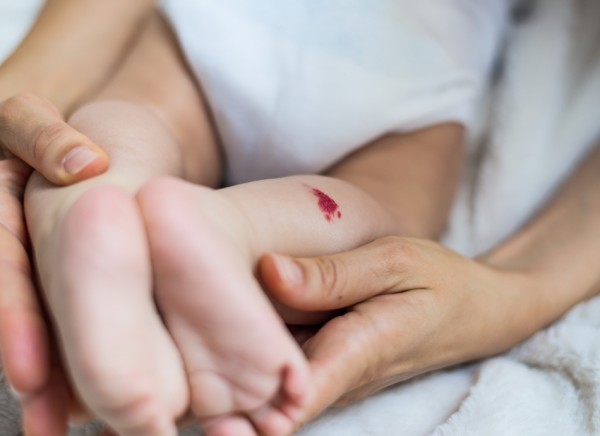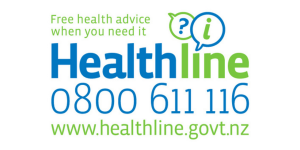Strawberry naevus
Also known as infantile haemangioma
Key points about strawberry naevus (infantile haemangioma)
- A strawberry naevus is a common type of birthmark in pēpi (babies). They often shrink and fade over time without needing treatment.
- They often appear in the first weeks of life.
- Most grow quickly, then slowly fade over time. Many fade completely by about 10 years of age.
- Only some pēpi need treatment.
- The content on this page comes from KidsHealth.(external link)

A strawberry naevus is a common type of birthmark that appears in pēpi. It looks red and raised, a bit like a strawberry.
A strawberry naevus can appear anywhere on the body. They most often develop on the head, face, or neck, but can also develop on the trunk, arms, or legs.
Other names for a strawberry naevus are:
- haemangioma/hemangioma of infancy
- infantile haemangioma
- strawberry birthmark
- strawberry mark.

Image credit: Canva
A strawberry naevus forms when tiny blood vessels group together on or under the skin. Health professionals don't know exactly why this happens. Strawberry naevi are common in pēpi and usually harmless.
Infantile haemangioma do not all look the same. They can form in different parts of the skin, which changes how they look.
An infantile haemangioma can be:
- superficial – bright red and on the surface of the skin (like a strawberry)
- deep – bluish in colour and under the skin
- mixed – have both superficial and deep parts
Strawberry naevi in pēpi usually:
- show up in the first few weeks of life
- grow quickly in the first months
- then slowly shrink and fade over time
- are not painful.
A strawberry naevus can:
- be bright red and raised on the surface of the skin
- look bluish or swollen if deeper in the skin
- range in size from small to large
- show up anywhere on the body, but are most common on the head, face, or neck.
Most strawberry naevi do not cause any problems. Sometimes they can cause problems and need treatment if:
- they are near the eye, nose, mouth, or airway (anywhere on the face or front of the neck)
- they grow very large (especially bigger than 5 cm on the body or 1 cm on the face)
- they develop sores or bleeding
- they are under the nappy, or in the armpit as these areas are more likely to cause sores
- there are 5 or more strawberry birthmarks.
Health professionals can usually diagnose a strawberry naevus by looking at it. Pēpi don’t normally need tests. Sometimes pēpi need an ultrasound if the birthmark is deep. They may also need a scan(external link) if there are concerns about where it is.
Most strawberry naevi don't need treatment.
If treatment is needed, it works best if started by 6 to 8 weeks of age.
Pēpi usually only need treatment if the birthmark:
- affects their airway or breathing
- is near their eye or blocking vision
- is on their mouth or lip
- is in the nappy area or armpit, where they may develop sores
- is in a cosmetically sensitive area – such as their nose, lip, cheek, ear
- Is large – bigger than 5 cm
- If there are 5 or more strawberry marks
If your child’s birthmark has any of these features, see your healthcare provider. Treatment works best when started early.
Healthcare providers can treat strawberry naevi in different ways. If your child needs treatment, your health professional will discuss the options.
Medicines
The most common treatment is a type of medicine called a beta-blocker. It works by shrinking the blood vessels in the birthmark. This can slow or stop its growth and help it fade. Pēpi usually take this medicine as a liquid by mouth. This medicine works best if started by 6 to 8 weeks of age. Tamariki (children) usually take this until they are over 12 months old.
Topical medicine
Topical medicine can sometimes help if the birthmark is small and flat. It may slow and stop the birthmark from growing. You put this medicine on the surface of the skin.
Laser therapy
Laser treatment may help if there is redness left behind after the birthmark has faded.
Surgery
Healthcare providers may recommend surgery if:
- other treatments haven't worked
- sores won’t heal
- your child's birthmark hasn't gone away and they are over 5 years of age
- the birthmark has left loose skin
- the birthmark has left some scarring.
A strawberry naevus usually grows during a child’s first 6 months. After this, strawberry naevi slowly shrink and fade over several years. Most are much smaller by the time a child starts school. Many fade completely by around 10 years of age. Some may leave behind a faint mark, a change in skin texture, or a bit of loose skin.
If your child has a strawberry naevus on their scalp, their hair should grow normally once the strawberry mark has faded.
Not all birthmarks are a strawberry naevus. Your healthcare provider can help you work out which type of birthmark your child has.
Other common types include the following.
- Port-wine stains: These are flat, purple-red birthmarks that don't fade.
- Salmon patches: These are flat pink patches that often fade in the first years of life.
- Moles: These are brown or black marks on the skin. They may be present at birth or appear later.
Brochures
Propranalol for treating haemangiomas(external link) Starship Child Health, NZ, 2017
Credits: Content shared between HealthInfo Canterbury, KidsHealth and Healthify He Puna Waiora as part of a National Health Content Hub Collaborative.
Last reviewed:





